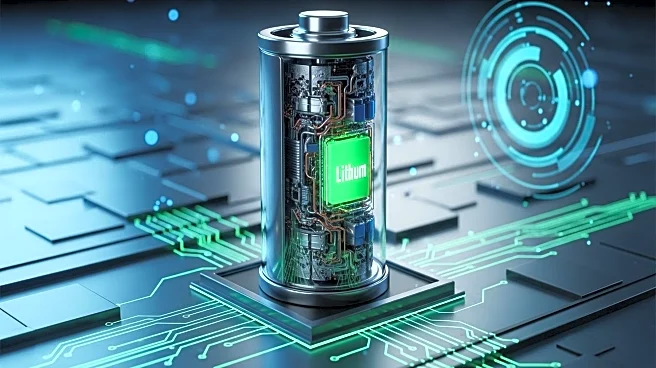What is the story about?
What's Happening?
Researchers at MIT have developed a new model to better understand the mechanisms behind lithium-ion batteries, which are widely used in electric vehicles and portable electronics. The study, published in Science, introduces the concept of coupled ion-electron transfer (CIET), where a lithium ion travels with an electron to the electrode, facilitating the intercalation process. This discovery challenges previous models that focused solely on lithium ion diffusion. The new understanding could lead to the design of more powerful and faster-charging batteries, as the rate of intercalation is crucial for battery performance. The research also found that altering electrolyte compositions can influence intercalation rates, suggesting potential pathways for optimizing battery efficiency.
Why It's Important?
This breakthrough in understanding lithium-ion battery mechanisms has significant implications for the energy and transportation sectors. As electric vehicles become more prevalent, the demand for efficient and fast-charging batteries increases. The insights from this study could lead to advancements in battery technology, enhancing the performance and appeal of electric vehicles. Additionally, improved battery efficiency can benefit a wide range of portable electronics, contributing to longer device lifespans and reduced environmental impact. The research underscores the importance of continued scientific exploration in energy storage technologies, which are critical for sustainable development and reducing reliance on fossil fuels.
What's Next?
Following this discovery, further research is expected to explore the practical applications of the CIET model in battery design. Scientists may investigate different electrolyte compositions to optimize intercalation rates and improve battery performance. The findings could also inspire new approaches to battery manufacturing, potentially leading to more cost-effective and environmentally friendly production methods. As the industry seeks to meet the growing demand for efficient energy storage solutions, collaborations between academia and industry could accelerate the development and commercialization of next-generation batteries.
AI Generated Content
Do you find this article useful?
















